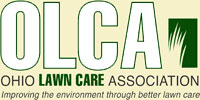How Effective is Frost Seeding?
Frost seeding is a cost-effective and efficient method for improving pastures and establishing new forage crops. It utilizes the natural freeze-thaw cycle to enhance seed-to-soil contact, allowing for better germination and growth. But how effective is frost seeding, and what factors contribute to its success? This article explores frost seeding’s benefits, best practices, and proper techniques to maximize its effectiveness.
What is Frost Seeding?
Frost seeding is a method of broadcasting seeds onto frozen ground, usually in late winter or early spring, before the soil even begins to thaw. The freezing and thawing action of the soil helps work the seeds into the ground, improving seed-to-soil contact without the need for tilling or drilling. This technique is commonly used for overseeding pastures, establishing legumes such as clover, and improving forage stands without significant soil disturbance.
Benefits and Effectiveness
Frost seeding offers numerous advantages that make it a popular choice among farmers and land managers:
- Cost-Effective: Since it eliminates the need for expensive machinery and labor-intensive soil preparation, frost seeding is a budget-friendly alternative to traditional planting methods.
- Minimal Soil Disturbance: Unlike conventional seeding techniques that require tilling, frost seeding helps preserve soil structure and reduce erosion.
- Enhanced Forage Quality: Legumes like clover introduced through frost seeding can improve soil fertility by fixing nitrogen, leading to healthier, more productive pastures.
- Weed Suppression: Introducing desirable forage species through frost seeding can help outcompete weeds and enhance pasture quality.
- Increased Germination Rates: The freeze-thaw cycle helps seeds settle into the soil, enhancing their chances of successful germination and establishment.
However, the effectiveness of frost seeding depends on several factors, including seed selection, weather conditions, and proper timing.
Best Practices for Success
To maximize the effectiveness of frost seeding, follow these best practices:
- Choose the Right Seeds: Certain forage species, such as red and white clover, ryegrass, and orchardgrass, are well-suited for frost seeding due to their ability to germinate and establish in cool temperatures.
- Monitor Soil Conditions: Frost seeding works best when the soil experiences regular freeze-thaw cycles, creating natural cracks that help the seeds settle in. Avoid seeding on excessively wet or muddy ground.
- Improve Seed-to-Soil Contact: Grazing or mowing existing vegetation before seeding can reduce competition and enhance seed placement.
- Adjust Seeding Rates: Due to potential seed loss from birds or adverse weather, slightly increasing seeding rates can improve success rates.
- Time It Right: Seeds should ideally be broadcast in late winter or early spring when the soil is still frozen but experiencing temperature fluctuations.
- Use Livestock to Assist: In some cases, allowing livestock to graze lightly after frost seeding can help press seeds into the soil, improving establishment rates.
Seeding Techniques
Frost seeding can be carried out using different methods depending on field conditions and equipment availability:
- Broadcast Seeding: The most common technique. It involves using a spreader or hand broadcasting to distribute seeds evenly across the frozen ground.
- Aerial Seeding: In large fields or areas with difficult terrain, aerial seeding can be an effective way to distribute seeds.
- Chain Dragging or Rolling: After broadcasting, dragging a chain harrow or roller over the area can further incorporate seeds into the soil.
Frost seeding is a highly effective and economical method to enhance forage production and improve pasture quality. While its success depends on a number of factors such as seed selection, soil conditions, and proper timing, following best practices can significantly increase the likelihood of strong germination and establishment. By making use of the natural freeze-thaw cycle, frost seeding offers a simple yet powerful way to rejuvenate pastures and maximize land productivity.
Don’t let another season slip by with lackluster pastures! Maximize your land’s potential and ensure robust forage growth this year. Visit Portage Turf and Pest today and take the first step towards a thriving, high-yield pasture with our expert frost seeding services. Schedule your consultation and unlock the secret to a greener, more productive future!






